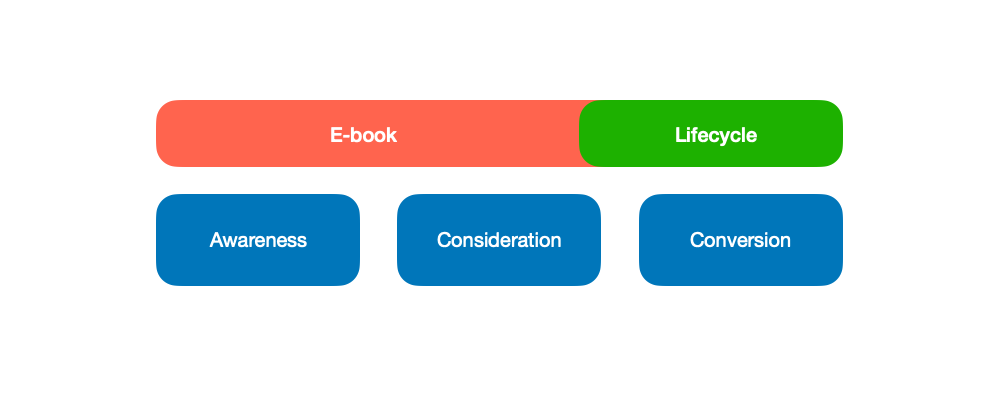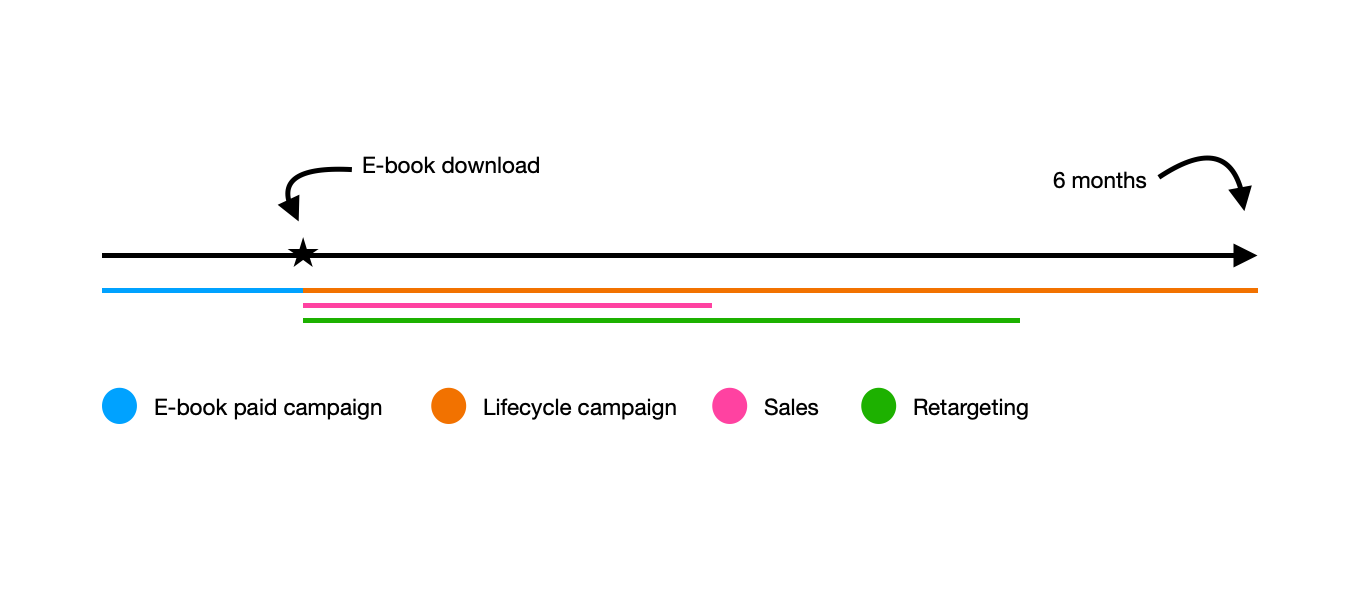Offer something free in your B2B paid acquisition efforts
In 1915, Gillette offered free safety razors to U.S. soldiers shipping out to the European battlefields of the First World War. This simple act of marketing led to significantly increased brand awareness on the part of millions of American ‘doughboys’, who subsequently continued purchasing Gillette products after they had returned home from the Great War. There have been many other historical instances where world-famous companies have offered something free to kickstart what became a lifelong relationship with their customers.
In the present era, most paid acquisition campaigns direct the consumer straight to a landing page with the immediate goal to sell them something, be it a product or service. While that may work well for some startups, I’m here to offer an alternative to the conventional paid campaign, which I have witnessed firsthand generate great successes.
This alternative campaign involves offering a free e-book, product (i.e., Air Pods) or even a lunch, all with the same north-star goal of ultimately selling your offering. Campaigns like the Gillette example are pioneers to what many startups today are leveraging in order to drive millions in revenues on paid ad platforms, such as LinkedIn.
I’ll walk you through this free paid acquisition campaign strategy, its best practices and the well-oiled lifecycle marketing that’s needed to make for a successful, called the return on ad spend (ROAS)-positive campaign.
Choosing the right free offer
There are many types of free items that can be offered, but the most common are:
E-books / service guides
Products (i.e., Air Pods)
Gift cards
Free meals at restaurant chains
There’s no right or wrong item to offer, so for the purposes of this guide I will be focusing on free e-books. The approach of offering a free e-book requires strategic thought in order to be successful. The other free offers are typically transactional, with the free item being given out in exchange for the individual’s time for a demo consultation.
Let’s take the example of a software automation tool such as Zapier, which helps startups create automations in their workflows. Below, I have listed several valuable e-book ideas that they could provide:
How to automate your sales team
How to automate your business operations
10 tips to simplify your accounting workflow
It’s important that your e-book title is catchy and speaks to a pain point for your target audience, which is then conveniently solved by your startup’s offering. Equally important is that the e-book itself is valuable and provides new insight into how the individual can solve their own problems.
Elements of a valuable e-book
The strategy of giving out a free e-book relies entirely on the value of the content inside, so it’s imperative to break down those elements that make for a great e-book. Below are some of the key elements to consider when creating your free e-book:
Relevant niche-focused content
Clear and engaging title
Well-defined structure
Use of visual elements
Actionable takeaways
A clear call-to-action
Continuing with the Zapier example, the title “10 Tips to Simplify Your Accounting Workflow,” would be very enticing for CPAs. To continue playing with the idea of focusing on time savings that a prospective accountant can experience, another title could be “Automate Your Accounting Firm and Save 10 hours Every Week!” Both titles are strong offerings.
Inside the e-book, the content provided is what will make or break whether someone becomes intrigued on your startup’s offering. You want to strike the right balance between a series of helpful tips, with tying back how your offering is the best way to implement those tips. Here’s a way to structure an e-book in our example:
Intro stating the problem,
Tip 1 - 5 stating solutions
How Zapier helps power the solutions
Tip 6 - 10 stating solutions
A clear call-to-action
Within this content, the use of charts or other visuals will make everything easier for the reader to digest and is always recommended for e-books. The concluding piece is the call-to-action, and whether you want your readers to schedule a free demo or sign up for a trial account, you must make sure that the instructions and process to so are very easy for said reader to follow.
LinkedIn paid campaign setup
Once your e-book is complete, it’s time to broadcast it to the world for their reading pleasure! While this tactic is very common with LinkedIn paid acquisition, I have also seen it work with cold email outreach, Meta paid acquisition and even organic social media, provided there is a large enough existing following.
Regardless of the outlet used, it’s important to make sure that the target audience is correct for the e-book. In the case of our LinkedIn campaign example, we might want to target small accounting firm owners. Taking this a step further, we could then choose to only target accounting firm owners in San Francisco who are likely to be more forward-leaning on tech and willing to use an automation platform like Zapier.
LinkedIn has two great campaign types to select from: their evergreen lead form campaign and the new Document Ads campaign. The former has been around for years and allows advertisers to collect email addresses, phone numbers and other consumer information directly on LinkedIn, via a form. The latter is now geared more specifically for giving out a free e-book or guide in exchange for the user’s information. The strategy of offering free guides has become so prevalent that LinkedIn has even rolled out a specific campaign type to support these efforts more specifically! Whichever campaign type you end up using, it is crucial that you are receiving the user’s information in exchange for your free e-book.
Complimentary lifecycle
Now that you are collecting emails from the e-books that you are, hopefully, placing in the hands of many consumers from your target audience, the work doesn’t just stop!
This strategy only really succeeds once you have setup a robust lifecycle campaign to nurture those leads who have given you their valuable information.
An e-book can only take your leads so far. Image courtesy of Jonathan Martinez.
It is important to realize that 90% of leads that request a free e-book will still be in the Awareness and Consideration stages of your funnel. It’s not until lifecycle emails start to flow to their inbox that they could transition from the free offer to a potential customer.
Your lifecycle campaign should contain the following three components to ensure success:
A mixture of content themes
Clear call-to-actions
Spans of roughly six months
The idea is to message leads with a variety of content over the course of several months, preferably at least six months. When leads are in the Awareness or Consideration stages, they may not be ready to pull the trigger on a purchase that day or even that same month, so it’s important to stay relevant in their minds months well beyond your initial interaction.
A few content themes to consider for emails in this lifecycle campaign include testimonials, user generated content, founder stories, value propositions and comparisons. Always be clear about what your desired action is in each email (i.e., signup for free trial) and save your best quality offers and discounts until later in your lifecycle series, as opposed to circulating them right at the start.
Sales support
Getting the sales team involved in your free e-book campaign is important, as these leads are treated differently than the rest. Imagine the difference between the following two sales pitches to these leads:
“Hi I’m John, calling to give you some more information about Zapier.”
“Hi I’m John! I saw you downloaded X e-book. How was it?”
If the sales team can personalize the pitch for the free e-book readers, it’ll allow for a seamless conversation and far less of a hard sales pitch. What should also be considered is the timing on when these leads are contacted so that they have sufficient time to read, but not enough time to forget. Below is an example of a fleshed-out e-book campaign involving multiple touchpoints:
Multiple touchpoints after e-book download. Image courtesy of Jonathan Martinez.
What’s important to note here is that the lifecycle campaign should be your longest touchpoint as it can be automated and requires minimal lift to extend for an estimated six months. Having a retargeting campaign that targets your e-book downloaders with more down-funnel CTAs (i.e., booked demos) can further help supplement your efforts.
Measuring results
Unlike a traditional campaign where you might be able to assess performance right out of the gate, the free offering strategy will take much more time to matriculate. All the same metrics are important to track, including CPL, CAC or ROAS, but the timeframe from initial acquisition to conversion will typically be longer.
You should be stacking the free e-book campaign against evergreen lead form or website acquisition that you’re currently doing. If you’re offering free lunch or AirPods, make sure to bake that price into your CAC, in addition to the advertising costs. As with any other paid acquisition campaign, test out various targeting, e-book titles and content to see what works best with your desired audience.
With free value and a sound strategy to convert your leads leveraging lifecycle, as well as your sales team, you can be well on your way to a successful paid acquisition campaign. Make sure to think outside the box with what you offer, as your competitors may have already saturated social platforms with some of the very content you have in mind.





